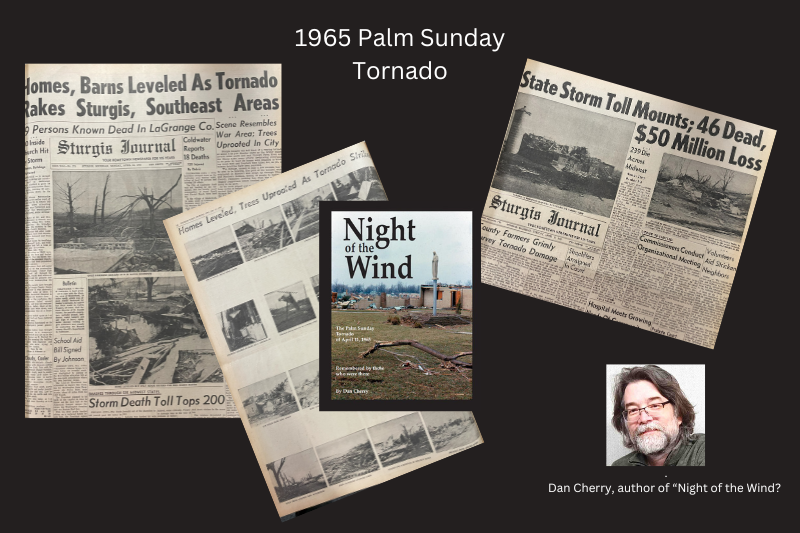In the range of the storm
The 1965 Palm Sunday Tornado is a day in history many can remember.
From the Sturgis Journal archives, I found the April 12, 1965 headlines: “Homes, Barns Leveled As Tornado Rakes Sturgis, Southeast Areas”
The first few paragraphs of one article read:
“Sturgis escaped the full blast of a roaring tornado about 6:45 p.m. Sunday as a twister passed several miles south and east through Fawn River and the Honey Lake areas utterly devastating everything in its path. At least six homes were smashed to kindling wood, fowl and livestock were killed but, as yet, no human fatalities have been recorded.
The damage, caused in only a few seconds, has to be seen to be believed.”

There are so many personal stories inside those paragraphs. Some were of great loss that remain fresh 59 years later.
They were even more fresh in 1999 when Dan Cherry, a newspaper reporter, started researching the 1965 Palm Sunday tornado. The results – “Night of the Wind” the most requested of his 10 books on local Michigan history.
At 3 p.m. on April 21, 2024, Cherry, now a Sturgis resident, will share his findings at Sturgis Historical Museum ~ at the Depot.
Having grown up in a small town in western Lenawee County, 60 miles east of Sturgis and living in southern Michigan from birth, Cherry said he focused on the state border counties affected. His research culminated in a 263-page, minute-by-minute account that was published in 2004.
Although more than 3,000 copies sold through 2017, Cherry expanded the book to include material he had gathered since the first edition release.
“Night of the Wind” continues to draw the attention of survivors, their families, and people interested in the 1965 Palm Sunday tornado, he said.
Cherry has been on TV and radio programs, as well as in numerous newspaper and magazine articles remembering the tornado. His book is recognized by the National Weather Service as a detailed account, told by survivors.
If you lived during that time anywhere near its path, perhaps you also remember.
I was five years old and heard the roar of the wind. It really did sound like a freight train. It was not devastating for my family but like everyone else, we drove around afterwards and shook our heads in amazement at the power of the wind. The National Guard was deployed to small communities and looked so official, I was doubly impressed.
As a newspaper reporter, I also wrote eye-witness articles as the anniversaries rolled around. It is an impressive piece of local history we can share, guided by Cherry’s research.




